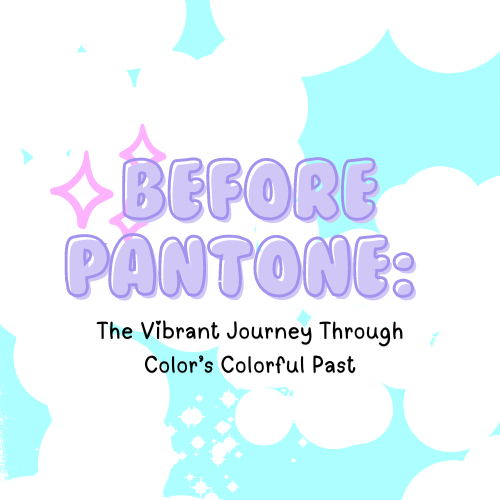
Before Pantone: The Vibrant Journey Through Color’s Colorful Past
Ever wonder how artists, scientists, and designers navigated the vibrant world of color before Pantone became the go-to guide? Long before those iconic Pantone swatch books graced our desks, creative minds were already concocting some incredibly detailed and artistic ways to categorize and communicate color. Let's take a fun and colorful dive into two fascinating color guides that predate Pantone by nearly 270 years—and then, we’ll bring it all back to how Pantone changed the game forever!
A. Boogert’s Traité des couleurs servant à la peinture à l’eau (Color Treatments for Water Painting)
Picture this: it’s 1692, and while the world is still figuring out Newton’s laws of motion, a Dutch artist named A. Boogert is busy crafting a masterpiece. But instead of painting a typical landscape or portrait, Boogert had a brilliant idea—why not create the world’s first comprehensive color guide? And he did, a whopping 271 years before Pantone was even a twinkle in anyone’s eye!
Boogert’s book, titled Traité des couleurs servant à la peinture à l’eau (which translates to Color Treatments for Water Painting), is an 800-page watercolor wonderland. This isn’t just a book of pretty colors—it’s a full-blown mixing guide. Imagine page after page filled with beautiful watercolor swatches, each accompanied by meticulous instructions on how to achieve each hue by mixing one, two, or three parts of water.
Want to mix a delicate lavender or create a deep indigo? Boogert had you covered. The beginning of the guide even includes a tutorial on the basics of color use in painting, making it the ultimate educational tool of its time. But here’s the catch: this beautiful book was never mass-produced. It was likely seen by very few people, making it a hidden gem in the world of color history. If only Instagram had existed in the 17th century—Boogert’s work would have been an instant hit!
Werner’s Nomenclature of Colours
Fast forward to 1814—149 years before Pantone launched its first color guide—and we meet another color visionary: Abraham Gottlob Werner. A German mineralogist with a keen eye for detail, Werner was obsessed with classifying the world around him. But his most lasting contribution? The Nomenclature of Colours—a guide that didn’t just list colors but connected them to the natural world.
Enter Patrick Syme, a Scottish painter who took Werner’s work and added his own artistic flair. Syme matched Werner’s color descriptions with actual swatches and expanded the guide by linking each color to specific natural elements—like the exact shade of a robin’s egg or the hue of a particular flower. This wasn’t just a color guide; it was a bridge between art, science, and nature.
Werner and Syme’s Nomenclature of Colours became the go-to reference for 19th-century artists, scientists, naturalists, and even anthropologists. In an era before photography, this guide helped people of all disciplines communicate color with precision. It was so influential that it’s been republished by Smithsonian Books as a pocket-sized wonder, offering a glimpse into the vibrant connection between colors and the natural world.
The Rise of Pantone: A Modern Color Revolution
While Boogert and Werner laid the groundwork for color classification centuries ago, the world of color was destined for a modern makeover. Enter Pantone—a name now synonymous with color precision and standardization. But how did Pantone become the color powerhouse it is today?
Pantone's story began in the 1960s when Lawrence Herbert saw an opportunity to bring order to the chaotic world of color printing. Back then, ensuring that colors printed consistently across different projects and materials was a nightmare. Herbert, who was working at a commercial printing company, took it upon himself to standardize color matching.
In 1963, he introduced the Pantone Matching System (PMS), a revolutionary tool for designers, printers, and manufacturers alike. The Pantone system included a collection of standardized color swatches—each with a unique number—allowing anyone, anywhere, to accurately reproduce a specific color. Whether you were in New York or New Delhi, Pantone made sure that your “Pantone 485 C” red would always be the exact same shade.
The Pantone system quickly became the industry standard, and it wasn’t long before it expanded beyond printing to influence fashion, product design, interior decorating, and more. Pantone colors are now a key reference for anyone working with color, from graphic designers to architects to painters.
But Pantone’s influence didn’t stop at just being a color-matching tool. In 2000, Pantone introduced the Pantone Color of the Year, a now-iconic trendsetting event where a single color is chosen to reflect the upcoming year's global mood and trends. This annual selection has had a significant impact on everything from fashion and home décor to marketing and branding.
Today, Pantone is much more than just a system for matching colors; it’s a global authority on color, influencing design and trends across industries. From its humble beginnings as a solution to printing inconsistencies, Pantone has grown into a color empire, proving that the right shade can have a lasting impact on the world.
Bringing It All Together
From the meticulous watercolor swatches of Boogert to Werner’s nature-inspired color guide, and finally to Pantone's modern-day color standardization, the evolution of color systems is a vibrant tapestry of creativity and innovation. These pioneers—both old and new—have shaped the way we see, use, and understand color in the world around us. So, whether you’re mixing paints, designing a logo, or picking out the perfect outfit, you’re part of a colorful history that spans centuries. And with Pantone leading the way, the future of color is brighter than ever!

2 comments
Great insight into the history or color matching!
Great insight into the history or color matching!